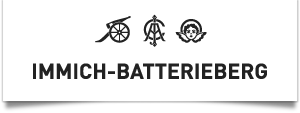Bericht via www.moselwinemerchant.com
In late December, I was invited to an impressive back-vintage tasting of diverse Mosel Riesling at Weingut Günther Steinmetz in Brauneberg. Because I foolishly discarded my scribbled notes, I cannot recall all the fine details of the event, but here’s what I did remember:
After all the bottles had been carefully uncorked and lined up, we began with two 1971s, a highly sought-after vintage (and my birth year!), and worked back through the decades to a 1921 Piesporter. Several of the wines, including a 1971 Graacher Himmelreich (Bergweiler-Prüm), 1952 Brauneberger Juffer-Sonnenuhr (Ferdinand Haag), and several Wehlener (1940 Lay, 1938 Rosenberg, and 1937), were sourced from a cellar in Mülheim. The Steinmetzes had vintages from the early sixties and late fifties on hand. And Gernot Kollmann, who now runs Immich-Batterieberg, had brought six different vintages directly from the estate’s cellar in Enkirch.
The 1971 Graacher was oxidized, but the ’71 Enkircher Ellergrub from Immich was in fine form with surprisingly bright acidity. We followed these two with a 1967 Eitelsbacher Karthäuserhofberger Sang Spätlese, which was unfortunately showing oxidation as well. In the 1960s Weingut Karthäuserhof had some remarkable bottlings known for their warmth and generosity, not the terms most often associated with the estate’s wines today, but sadly we couldn’t get a good look at the wine through the oxidation here. (For a period of time up until the mid 1980s, Karthäuserhof had bottled their wines from the iron-rich Karthäuserhofberg according to five former place-names: Burgberg, Kronenberg, Orthsberg, Sang, and Stirn.)
Although there was an occasional off-putting bottle or wines simply past their prime, the tasting revealed some real gems. Stefan Steinmetz’s father, Günther, who joined us for the occasion, made his first wine as a 17-year-old in 1958. And we were fortunate to taste a bottle from this vintage: a 1958 Brauneberger Mandelgraben naturrein from Willi Steinmetz. (On old labels naturrein means literally „naturally pure,‘ and was the pre-1971 Wine Law term for a non-chaptalized wine before today’s Prädikat system, which had created Kabinett to go along with Spätlese, Auslese, and so forth. Willi Steinmetz was the former name of Weingut Günther Steinmetz.). In those early years, until the sterile filter became readily available to more small growers, he produced mostly dry Riesling. In addition to the ’58 Mandelgraben, we were treated to his ’59 Brauneberger Hasenläufer Auslese and a ’60 Brauneberger Juffer naturrein. All three were still exquisite and vibrant. One of my favorites was the 1960 Juffer, which had less than 2 grams per liter residual sugar. It was an absolutely stunning bottle of Mosel Riesling, especially from a „lesser‘ vintage.
Among the other highlights was a ’64 Enkircher Batterieberg Auslese from Immich-Batterieberg. As with the 1953 Ellergrub (no Prädikat), both had been recorked at the domaine, which surely made them taste differently and younger than had they not been recorked. On the other hand, the oldest vintages-1949 and 1938 Batterieberg-still had original corks and were strikingly youthful, an incredible sign of just how long Mosel Riesling can age.
